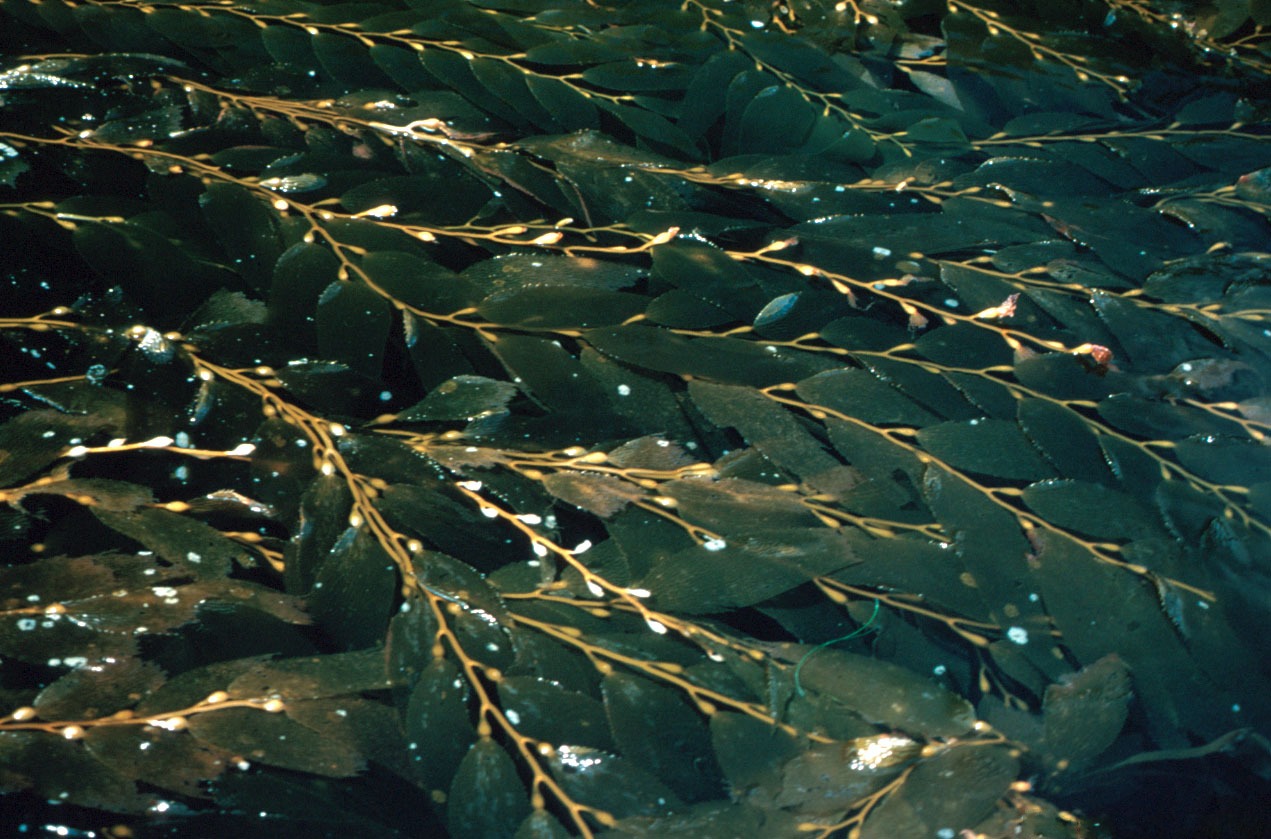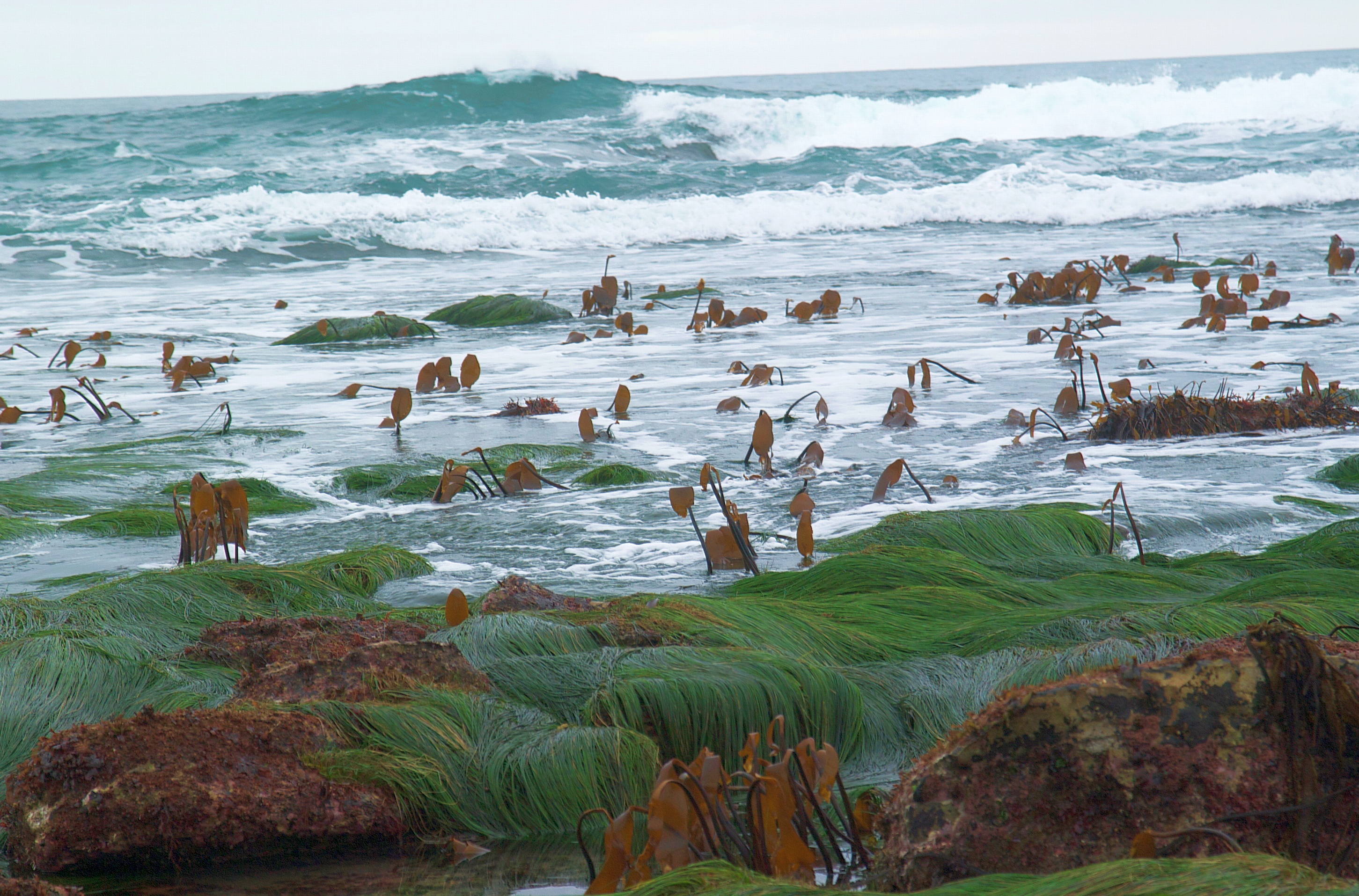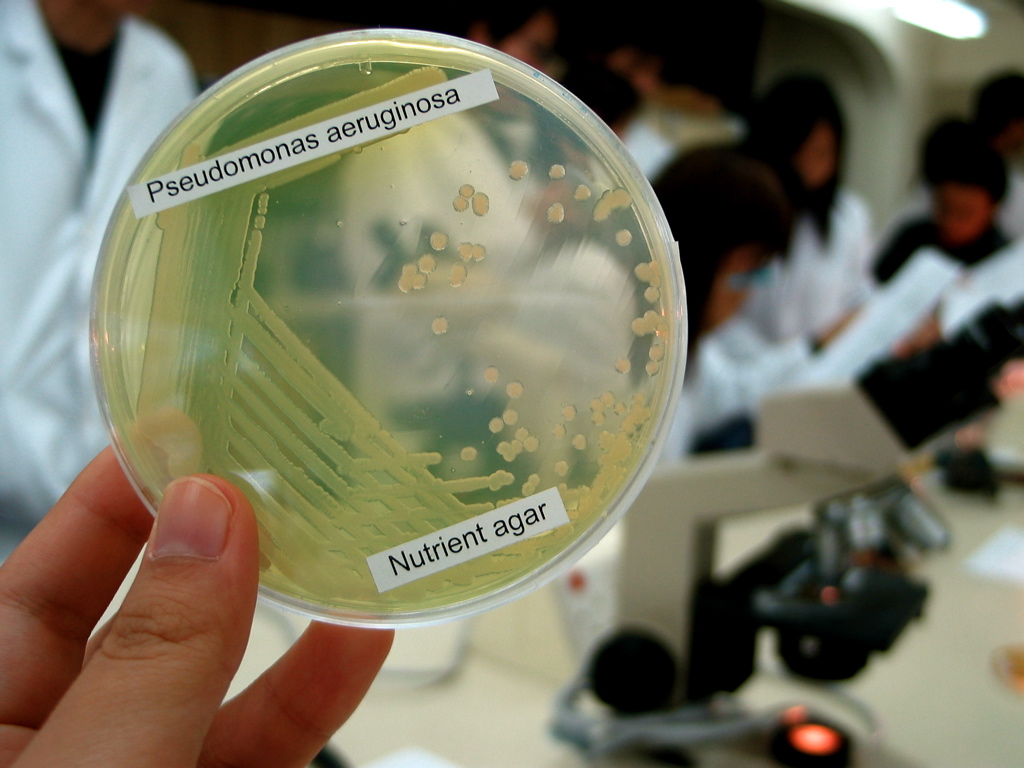|
Algin
Alginic acid, also called algin, is a naturally occurring, edible polysaccharide found in brown algae. It is hydrophilic and forms a viscous gum when hydrated. When the alginic acid binds with sodium and calcium ions, the resulting salts are known as alginates. Its colour ranges from white to yellowish-brown. It is sold in filamentous, granular, or powdered forms. It is a significant component of the biofilms produced by the bacterium ''Pseudomonas aeruginosa'', a major pathogen found in the lungs of some people who have cystic fibrosis. The biofilm and ''P. aeruginosa'' have a high resistance to antibiotics, but are susceptible to inhibition by macrophages. Alginate was discovered by British chemical scientist E. C. C. Stanford in 1881, and he patented an extraction process for it in the same year. The alginate was extracted, in the original patent, by first soaking the algae in water or diluted acid, then extracting the alginate by soaking it in sodium carbonate, and finally ... [...More Info...] [...Related Items...] OR: [Wikipedia] [Google] [Baidu] |
Kelp
Kelps are large brown algae or seaweeds that make up the order (biology), order Laminariales. There are about 30 different genus, genera. Despite its appearance and use of photosynthesis in chloroplasts, kelp is technically not a plant but a stramenopile (a group containing many protists). Kelp grow from stalks close together in kelp forest, very dense areas like forests under shallow temperate and Arctic oceans. They were previously thought to have appeared in the Miocene, 5 to 23 million years ago based on fossils from California. New fossils of kelp holdfasts from early Oligocene rocks in Washington State show that kelps were present in the northeastern Pacific Ocean by at least 32 million years ago. The organisms require nutrient-rich water with temperatures between . They are known for their high growth rate—the genera ''Macrocystis'' and ''Nereocystis'' can grow as fast as half a metre a day (that is, about 20 inches a day), ultimately reaching .Thomas, D. 2002. ''Seaweed ... [...More Info...] [...Related Items...] OR: [Wikipedia] [Google] [Baidu] |
Seaweeds
Seaweed, or macroalgae, refers to thousands of species of macroscopic, multicellular, marine algae. The term includes some types of ''Rhodophyta'' (red), '' Phaeophyta'' (brown) and ''Chlorophyta'' (green) macroalgae. Seaweed species such as kelps provide essential nursery habitat for fisheries and other marine species and thus protect food sources; other species, such as planktonic algae, play a vital role in capturing carbon and producing at least 50% of Earth's oxygen. Natural seaweed ecosystems are sometimes under threat from human activity. For example, mechanical dredging of kelp destroys the resource and dependent fisheries. Other forces also threaten some seaweed ecosystems; for example, a wasting disease in predators of purple urchins has led to an urchin population surge which has destroyed large kelp forest regions off the coast of California. Humans have a long history of cultivating seaweeds for their uses. In recent years, seaweed farming has become a global ... [...More Info...] [...Related Items...] OR: [Wikipedia] [Google] [Baidu] |
Phaeophyceae
Brown algae (: alga) are a large group of multicellular algae comprising the class Phaeophyceae. They include many seaweeds located in colder waters of the Northern Hemisphere. Brown algae are the major seaweeds of the temperate and polar regions. Many brown algae, such as members of the order Fucales, commonly grow along rocky seashores. Most brown algae live in marine environments, where they play an important role both as food and as a potential habitat. For instance, '' Macrocystis'', a kelp of the order Laminariales, may reach in length and forms prominent underwater kelp forests that contain a high level of biodiversity. Another example is '' Sargassum'', which creates unique floating mats of seaweed in the tropical waters of the Sargasso Sea that serve as the habitats for many species. Some members of the class, such as kelps, are used by humans as food. Between 1,500 and 2,000 species of brown algae are known worldwide. Some species, such as '' Ascophyllum nodosum' ... [...More Info...] [...Related Items...] OR: [Wikipedia] [Google] [Baidu] |
Brown Algae
Brown algae (: alga) are a large group of multicellular algae comprising the class (biology), class Phaeophyceae. They include many seaweeds located in colder waters of the Northern Hemisphere. Brown algae are the major seaweeds of the temperate and polar regions. Many brown algae, such as members of the order Fucales, commonly grow along rocky seashores. Most brown algae live in marine environments, where they play an important role both as food and as a potential habitat. For instance, ''Macrocystis'', a kelp of the order Laminariales, may reach in length and forms prominent underwater kelp forests that contain a high level of biodiversity. Another example is ''Sargassum'', which creates unique floating mats of seaweed in the tropical waters of the Sargasso Sea that serve as the habitats for many species. Some members of the class, such as kelps, are used by humans as food. Between 1,500 and 2,000 species of brown algae are known worldwide. Some species, such as ''Ascophyllum ... [...More Info...] [...Related Items...] OR: [Wikipedia] [Google] [Baidu] |
Laminaria
''Laminaria'' is a genus of brown algae, brown seaweed in the order Kelp, Laminariales (kelp), comprising 31 species native to the north Atlantic and northern Pacific Oceans. This economically important genus is characterized by long, leathery Lamina (algae), laminae and relatively large size. Some species are called Devil's apron, due to their shape, or sea colander, due to the perforations present on the Lamina (algae), lamina. Others are referred to as ''tangle''. ''Laminaria'' form a habitat for many fish and invertebrates. The life cycle of ''Laminaria'' has wikt:heteromorphic, heteromorphic alternation of generations which differs from ''Fucus''. At meiosis the male and female zoospores are produced separately, then germinate into male and female gametophytes. The female egg matures in the oogonium until the male sperm fertilizes it. Life-Cycle: The most apparent form of ''Laminaria'' is its sporophyte phase, a structure composed of the holdfast (biology), holdfast, the Sti ... [...More Info...] [...Related Items...] OR: [Wikipedia] [Google] [Baidu] |
Laminaria Japonica
''Saccharina japonica'' is a marine species of the Phaeophyceae (brown algae) class, a type of kelp or seaweed, which is extensively cultivated on ropes between the seas of China, Japan and Korea. It has the common name sweet kelp. It is widely eaten in East Asia. A commercially important species, ''S. japonica'' is also called ''ma-konbu'' () in Japanese, ''dasima'' () in Korean and ''hǎidài'' () in Chinese. Large harvests are produced by rope cultivation which is a simple method of growing seaweeds by attaching them to floating ropes in the ocean. The species has been cultivated in China, Japan, Korea, Russia and France. It is one of the two most consumed species of kelp in China and Japan. ''Saccharina japonica'' is also used for the production of alginates, with China producing up to ten thousand tons of the product each year. ''S. japonica'' contains very high amounts of iodine. Excessive consumption (15 g/day, containing 35 mg iodine) suppresses thyroid funct ... [...More Info...] [...Related Items...] OR: [Wikipedia] [Google] [Baidu] |
Macrocystis Pyrifera
''Macrocystis'' is a monospecific genus of kelp (large brown algae) with all species now synonymous with ''Macrocystis pyrifera''. It is commonly known as giant kelp or bladder kelp. This genus contains the largest of all the Phaeophyceae or brown algae. ''Macrocystis'' has pneumatocysts at the base of its blades. Sporophytes are perennial and the individual may live for up to three years; stipes/fronds within a whole individual undergo senescence, where each frond may persist for approximately 100 days. The genus is found widely in subtropical, temperate, and sub-Antarctic oceans of the Southern Hemisphere and in the northeast Pacific. ''Macrocystis'' is often a major component of temperate kelp forests. Despite its appearance, it is not a plant; it is a heterokont. Giant kelp is common along the coast of the northeastern Pacific Ocean, from Baja California north to southeast Alaska, and is also found in the southern oceans near South America, South Africa, Australia, and New ... [...More Info...] [...Related Items...] OR: [Wikipedia] [Google] [Baidu] |
Guluronic Acid
Guluronic acid is a uronic acid monosaccharide that may be derived from gulose. -Guluronic acid is a C-3 epimer of -galacturonic acid and a C-5 epimer of -mannuronic acid. Along with -mannuronic acid, -guluronic acid is a component of alginic acid, a polysaccharide found in brown algae. α-L-Guluronic acid has been found to bind divalent metal ions (such as calcium and strontium) through the carboxylate moiety and through the ''axial''-''equatorial''-''axial'' arrangement of hydroxyl groups found around the ring. References Uronic acids {{Carbohydrate-stub ... [...More Info...] [...Related Items...] OR: [Wikipedia] [Google] [Baidu] |
Natural Gum
Natural gums are polysaccharides of natural origin, capable of causing a large increase in a solution's viscosity, even at small concentrations. They are mostly gum (botany), botanical gums, found in the woody elements of plants or in seed coatings. Human uses Gums are used in the food industry as thickening agents, gelling agents, Emulsion, emulsifying agents, and Food additive#Categories , stabilizers, and in other industrial adhesives, Excipient#Types, binding agents, crystal inhibitors, Brewing#Ingredients, clarifying agents, encapsulating agents, Flocculation , flocculating agents, swelling agents, foam stabilizers, etc. When consumed by humans, many of these gums are fermented by the microbes that inhabit the lower gastrointestinal tract (microbiome) and may influence the ecology and functions of these microscopic communities. Commercial significance Humans have used natural gums for various purposes, including chewing gum , chewing and the manufacturing of a wide rang ... [...More Info...] [...Related Items...] OR: [Wikipedia] [Google] [Baidu] |
Pseudomonas Aeruginosa
''Pseudomonas aeruginosa'' is a common Bacterial capsule, encapsulated, Gram-negative bacteria, Gram-negative, Aerobic organism, aerobic–facultative anaerobe, facultatively anaerobic, Bacillus (shape), rod-shaped bacteria, bacterium that can cause disease in plants and animals, including humans. A species of considerable medical importance, ''P. aeruginosa'' is a multiple drug resistance, multidrug resistant pathogen recognized for its ubiquity, its Intrinsic and extrinsic properties, intrinsically advanced antibiotic resistance mechanisms, and its association with serious illnesses – hospital-acquired infections such as ventilator-associated pneumonia and various sepsis syndromes. ''P. aeruginosa'' is able to selectively inhibit various antibiotics from penetrating its outer membrane'' ''– and has high resistance to several antibiotics. According to the World Health Organization ''P. aeruginosa'' poses one of the greatest threats to humans in terms of an ... [...More Info...] [...Related Items...] OR: [Wikipedia] [Google] [Baidu] |
Epimer
In stereochemistry, an epimer is one of a pair of diastereomers. The two epimers have opposite configuration at only one stereogenic center out of at least two. All other stereogenic centers in the molecules are the same in each. Epimerization is the interconversion of one epimer to the other epimer. Doxorubicin and epirubicin are two epimers that are used as drugs. Examples The stereoisomers β-D- glucopyranose and β-D- mannopyranose are epimers because they differ only in the stereochemistry at the C-2 position. The hydroxy group in β-D-glucopyranose is equatorial (in the "plane" of the ring), while in β-D-mannopyranose the C-2 hydroxy group is axial (up from the "plane" of the ring). These two molecules are epimers but, because they are not mirror images of each other, are not enantiomers. (Enantiomers have the same name, but differ in D and L classification.) They are also not sugar anomers, since it is not the anomeric carbon involved in the stereochemistry. Simila ... [...More Info...] [...Related Items...] OR: [Wikipedia] [Google] [Baidu] |







